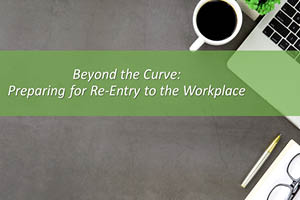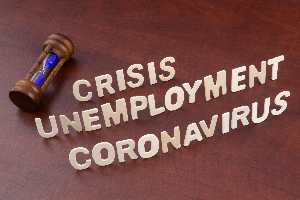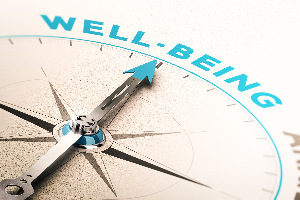
Nonprofit employers have faced unimaginable challenges in the wake of the COVID-19 pandemic. Now, as states start permitting businesses to reopen, nonprofits across the country are trying to figure out what that looks like for them, their employees and the communities they serve.
This informative webinar recording provides helpful tips for preparing to welcome employees back to the office while maintaining compliance with state and federal regulations related to the Coronavirus. Watch now to discover:
For additional COVID-19 employer resources and FAQs, please visit our COVID-19 Resource Center today!

UST is deeply saddened by the series of disturbing and tragic events that have taken place over the last few weeks related to the violence and injustice toward the Black community—including George Floyd, Breonna Taylor, Ahmaud Arbery, and countless others. The resulting protests have created a long overdue flashpoint for awareness, action, and change.
UST has supported the nonprofit community for over 35 years and we are proud of the impact that each of our members have in their communities. We know that communities that have nonprofit organizations established within experience less crime, such as murder, violent crime and crimes against property. Sharkey’s work also affirms some of the tenets of community policing: that neighborhoods are vital to policing themselves, and that they can address the complex roots of violence in ways that fall beyond traditional police work. Whether it is taking back the public parks, establishing mentorship programs for youth or implementing job training and employment opportunities, these all make a difference. But. That. Is. Not. Enough.
UST does not do this work directly but we support the organizations who do in their efforts, their ideals and their fight for more social justice and equity in communities across the nation. We are fortunate to have a strong board of Trustees who are all working in their own spaces for change. We think our current Board Chair, Karen Beavor, CEO of the Georgia Center for Nonprofits has expressed our sentiments exceptionally well. View her complete message here.
UST will continue to support the work our nonprofit members do to address these issues; we will listen, and will actively look for ways to be part of the change that is so desperately needed.

Question: Can we screen employees returning to work for COVID-19?
Answer: Yes. Generally, inquiries about an employee’s health or a medical exam (like a temperature check) would not be allowed, but the Equal Employment Opportunity Commission (EEOC) has stated that screening employees for symptoms of COVID-19 is allowed since it is a direct threat to others in the workplace. Because of that, you may inquire about symptoms related to the virus, require self-reporting by employees, and take employees’ temperatures.
Known symptoms of COVID-19 include fever, cough, chills, shortness of breath or difficulty breathing, muscle pain, headache, sore throat, and sudden loss of taste or smell. As the medical community learns more about COVID-19, additional symptoms could be added to this list. Employers can check this page for currently recognized symptoms.
If you decide to do screenings, make sure you screen all employees; otherwise you may find yourself in the middle of a discrimination claim. And remember that all information about employees’ health — including a lack of symptoms or temperature — must be kept confidential.
Q&A provided by ThinkHR, powering the UST HR Workplace for nonprofit HR teams. Have HR questions? Sign your nonprofit up for a free 60-day trial today.

On March 11, 2020, the World Health Organization (WHO) declared the COVID-19 coronarvirus outbreak a pandemic leaving nonprofit employers across the states scrambling to understand the impact on their business. Now that orders are being lifted and we prepare to re-enter the workplace it’s important to understand the do’s and don’ts of implementing new COVID-19 procedures within your organization.
Do you know whether employers are permitted to take employees’ temperatures and ask about symptoms? Or if employers should allow employees to work at the office if they have been exposed to COVID-19, but are not showing any symptoms?
Since it’s often difficult to differentiate the credible information from the bogus, UST has compiled a COVID-19 Fact vs. Fiction handout for nonprofit leaders. Uncover the answers by downloading the COVID-19 Fact vs. Fiction Employer Handoutand discover other key COVID-19 facts as well as common misconceptions.
Ensure that Your Nonprofit Stays Compliant! Get a FREE 60-Day Trial of UST HR Workplace, powered by ThinkHR—a cloud-based platform that provides access to a live HR hotline, COVID-19 policy updates, thousands of documents and more. Request your free trial today at www.chooseust.org/HR-trial.

While we continue to adjust to this new “normal” of working remotely—with little to no face-to-face interaction—the COVID-19 pandemic has taken a major toll on nonprofit employees and their mental health.
This informative webinar provides helpful tips on how nonprofit leaders can help keep employees productive and engaged in day-to-day work activities. Watch now to learn key strategies that include:
For more access to nonprofit specific how-to guides, checklists and resources? Sign up for UST’s monthly eNews today!

In a recent nonprofit survey, UST uncovered how COVID-19 has affected 501(c)(3) nonprofit organizations, their employees and operational strategies.
With nearly 800 survey respondents—representing a wide variety of nonprofits from across the U.S.—this report highlights critical COVID-19 information, including:
This report will provide valuable insight on how nonprofit organizations are coping with the unprecedented challenges during this pandemic. Download your complimentary copy today.

Nonprofits are facing unprecedented challenges navigating COVID-19 and its impact on day-to-day operations. Our recent webinar was designed to provide some valuable insight into the latest unemployment legislation and its impact on your organization and its employees.
This informative webinar recording discusses how COVID-19 is impacting nonprofits nationwide, what alternatives there are to layoffs and/or workforce reductions and more. Watch now to discover:
For additional COVID-19 employer resources and FAQs, please visit our COVID-19 Resource Center today!

It’s natural to feel stressed or anxious when presented with unprecedented circumstances. The coronavirus or COVID-19 continues to present new and unique challenges that evolve every day. Nonprofit employers are navigating unchartered waters and their employees are along for the ride. Many are working from home for the first time, isolated from co-workers, friends and family while also home-schooling their children and or taking care of elderly family members. This disruption in our daily routines has caused added anxiety, stress and strain—physically, mentally and financially. All of this combined makes it more important than ever to find new ways to interact and communicate with others while also taking care of our mental health and physical well-being.
You can’t avoid stress completely but too much stress over long periods of time can be harmful to your health—ranging from headaches, decreased energy, irritability, body aches and pains, irregular sleep or insomnia, difficulty concentrating or worse, can contribute to serious health problems such as high blood pressure, heart disease and mental health disorders. The good news is you can get ahead of stress by recognizing how you feel and practicing ways to find calmness.
Below are some ways to manage stress and anxiety through positive self-care and healthy social connections:
Be selective about how you consume COVID-19 information – while it’s good to be informed and aware of what’s going on around the world and in your community while we combat this virus, ensure you follow credible sources such as the Centers for Disease Control (CDC) and the World Health Organization (WHO) and limit how much time you spend absorbing that information.
Set boundaries on your work schedule – it’s easy to keep working when you have no reason to get up and leave the office but it’s important that you set a schedule with healthy boundaries and stick to it.
Maintain a routine – having some semblance of structure and consistency from your pre-Coronavirus life will help to keep a sense of control and normalcy while also making it a little easier to readjust to the outside world when it’s time to go back to work.
Limit your time online – set a timer, focus on positive things while you are online and divide your time between the different sites you like to browse. You can even install a website blocker to help temporarily force you off certain websites.
Stay connected – our greatest resource for alleviating stress is still connecting with our loved ones. Don’t just pick up the phone, use Skype, FaceTime or Google Hangouts to get some face to face time.
Leverage Mindfulness-Based Stress Reduction – the practice of meditation can help relieve anxiety, boost your mood, improve sleep and promote mental and emotional health—the benefits are endless and you can do it anytime, anywhere.
Stay active – this isn’t just good for your physical health but also for your mental health so don’t let this time at home go to waste. It’s important to keep moving, whether it’s strenuous exercise, Yoga or even just light stretching. You can find an entire universe of free classes online right now with many instructors live-streaming classes from home.
Get outdoors – fresh air goes a long way in easing the feelings brought on by stress and anxiety. Take a long walk around your neighborhood or go for a bike ride and enjoy some new scenery—all while maintaining physical distance from others of course.
Embrace a hobby – partake in something you really enjoy doing just for the fun of doing it. Something that requires attention and physical movement like embroidery, scrap-booking, painting or sewing to name a few.
Learn a new skill – knowledge is power as the saying goes. There are an unlimited number of online classes you can partake at no or minimal cost that range from bread making and drawing to crochet and learning a new language. Skillshare and Udemy are great resources.
Take an adventure through a book – start a mini book club and invite your friends to participate via video so everyone can share their thoughts and interact as a group.
Get in the kitchen – if you enjoy cooking or baking, there’s no better time than now to try out some of those recipes you’ve been waiting to experiment with.
Do some Spring cleaning – it is Spring after all. Organize those drawers that have been begging for order, clean out your closets, and donate what you no longer need or use, or work on getting your filing cabinet in order.
Watch feel-good movies – musicals are a great way to lift your spirits if you’re into that or distract your mind with an old black and white classic.
Count your blessings – take a few moments to focus on all that you have. Be thoughtful and sincere about who and what you appreciate in your life and let them know.
Find an online support group – there are a plethora of websites out there that offer virtual or phone options for group or individual support as well as live chat rooms. Having others to talk to that share your same concerns can help alleviate the anxiety brought on by COVID-19.
As we protect ourselves against potential exposure to the coronavirus, keep in mind that social distancing does not mean social isolation and remember that you’re not alone. Look after yourself, get enough sleep, eat well, and reach out to your support network. Engage in activities that benefit your well-being, bring you happiness, and distract you from existing challenges. Set your sights on long-avoided tasks or projects and try something new. The above mentioned tips about self-care are meant to help you thrive in mind, body, and spirit. Coping with stress in positive ways will make you happier, healthier, and stronger.

While in the midst of a global emergency, the current COVID-19 pandemic, nonprofits are challenged with how to successfully continue managing their mission-driven brand. Going the extra mile to prepare your organization for handling such a feat, will help you and your team better tackle any challenges that arise.
This is an opportunity to align your messaging with what your community needs and/or might be seeking during this time. A crisis is temporary and taking the time to show your nonprofit in a new light by providing specific messaging can instill a sense of trust and value that will be long lasting. It’s important to maintain vigilance in protecting your staff and being an example of a model citizen by not participating in unsafe behavior. Above all else, nonprofits must remain diligent of their brand and visible by its community to ensure they come out of this stronger than before. Here are few objectives for your nonprofit to keep in mind:
When it comes to collaboration in times of a crisis, you’ll have to get creative. These strategies shouldn’t complicate your current workflow but rather benefit your organization—having these tools in place will be very beneficial when a crisis is upon us. Taking your staff into consideration and how they’ll continue to operate is vital to prevent interruptions with current business tasks. For example, if your employees are required to work from home for any duration of time, what logistics and tools should you have in place to ensure everything runs smoothly? Tools such as, GoToMeeting and Slack allow your team to stay connected with one another while still being able to conduct important meetings and to ensure your mission continues to move forward. With the access to technology, it can make it easy to work from anywhere.
In times of a global emergency, having a plan in place to manage your organization, brand and team through the crisis is just as important as the ability to remain flexible and creative.

Here at UST, we understand the importance for nonprofit leaders to remain informed and prepared as the recent outbreak of the Coronavirus continues to impact the communities you serve. Nonprofit organizations nationwide have had to react quickly to a rapidly evolving crisis and change their standard business practices to maintain critical operations.
Like so many of you, we have transitioned to remote work and are continuously gathering resources to stay on top of the quickly evolving legislative developments designed to mitigate the economic fallout triggered by the public health response. We’ve also been in close contact with our strategic partners nationwide to ensure that the unique needs of nonprofit employers are being prioritized by our elected representatives during this time.
In an effort to help keep nonprofits abreast of evolving information, we’ve created a dedicated COVID Resources Webpage on our website, which we’ll continuously update, provides:
We’ll continuously be updating this page so please check back regularly and bookmark the page above for easy reference. UST has been supporting nonprofit employers for over 35 years and understand the value of being informed during times of uncertainty and challenge. Please know our thoughts are with all who have been impacted by the recent outbreak of COVID-19 and we’re here to answer any questions you may have.

UST maintains a secure site. This means that information we obtain from you in the process of enrolling is protected and cannot be viewed by others. Information about your agency is provided to our various service providers once you enroll in UST for the purpose of providing you with the best possible service. Your information will never be sold or rented to other entities that are not affiliated with UST. Agencies that are actively enrolled in UST are listed for review by other agencies, UST’s sponsors and potential participants, but no information specific to your agency can be reviewed by anyone not affiliated with UST and not otherwise engaged in providing services to you except as required by law or valid legal process.
Your use of this site and the provision of basic information constitute your consent for UST to use the information supplied.
UST may collect generic information about overall website traffic, and use other analytical information and tools to help us improve our website and provide the best possible information and service. As you browse UST’s website, cookies may also be placed on your computer so that we can better understand what information our visitors are most interested in, and to help direct you to other relevant information. These cookies do not collect personal information such as your name, email, postal address or phone number. To opt out of some of these cookies, click here. If you are a Twitter user, and prefer not to have Twitter ad content tailored to you, learn more here.
Further, our website may contain links to other sites. Anytime you connect to another website, their respective privacy policy will apply and UST is not responsible for the privacy practices of others.
This Privacy Policy and the Terms of Use for our site is subject to change.
UST maintains a secure site. This means that information we obtain from you in the process of enrolling is protected and cannot be viewed by others. Information about your agency is provided to our various service providers once you enroll in UST for the purpose of providing you with the best possible service. Your information will never be sold or rented to other entities that are not affiliated with UST. Agencies that are actively enrolled in UST are listed for review by other agencies, UST’s sponsors and potential participants, but no information specific to your agency can be reviewed by anyone not affiliated with UST and not otherwise engaged in providing services to you except as required by law or valid legal process.
Your use of this site and the provision of basic information constitute your consent for UST to use the information supplied.
UST may collect generic information about overall website traffic, and use other analytical information and tools to help us improve our website and provide the best possible information and service. As you browse UST’s website, cookies may also be placed on your computer so that we can better understand what information our visitors are most interested in, and to help direct you to other relevant information. These cookies do not collect personal information such as your name, email, postal address or phone number. To opt out of some of these cookies, click here. If you are a Twitter user, and prefer not to have Twitter ad content tailored to you, learn more here.
Further, our website may contain links to other sites. Anytime you connect to another website, their respective privacy policy will apply and UST is not responsible for the privacy practices of others.
This Privacy Policy and the Terms of Use for our site is subject to change.